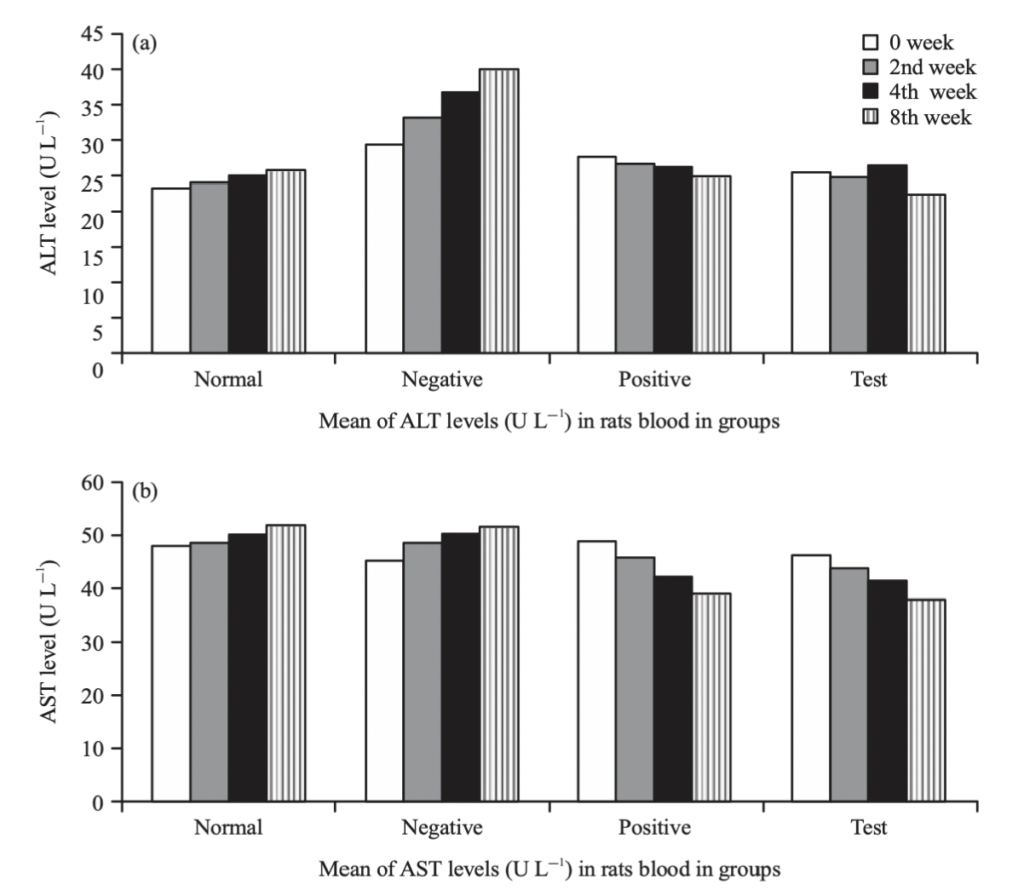Isoniazid (INH), one of the most important drugs used to treat tuberculosis, is hydrolyzed in the liver through an enzymatic reaction with CYP2E1, resulting in the formation of hepatotoxic compounds. In this case, if there is damage to the liver cells, their levels of both alanine transaminase (ALT) and aspartate transaminase (AST) are increased in the blood. The fruit of pineapple (Ananas comosus (L.) Merr) has been shown to inhibit cytochrome 2E1 (CYP2E1) activity.
On this basis, the researchers divided rats into four groups and experimentally evaluated the hepatoprotective activity of pineapple juice in INH-induced rats. In this case, the normal group was treated with water, the negative group was induced with INH, the positive group was treated with silymarin, and the test group was treated with pineapple juice. The rats were orally administered for 8 weeks, and the blood was collected at 0, 2, 4, and 8 weeks after the start of treatment to determine the levels of ALT and AST. The livers of the rats were taken for histopathological testing during week 8. The results confirmed that extracts of ethanol and water from pineapple fruit reduced ALT and AST levels in rats after 4 weeks of treatment (as shown in the figure below), suggesting that pineapple juice showed hepatoprotective activity based on the fact that the increase in ALT and AST levels was proportional to the impairment of liver function. After analysis, it was learned that pineapple juice protects the liver of rats by inhibiting the central venous diameter from widening.

Yantih, N., Harahap, Y., Sumaryono, W., Setiabudy, R., & Rahayu, L. (2017). Hepatoprotective activity of pineapple (Ananas comosus) juice on isoniazid-induced rats. Journal of Biological Sciences, 17(8), 388-393. [Link]
